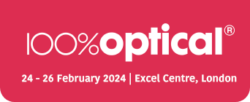| 24/02/2024 | OSA Stand |
The pain of inflammation Delve into the world of sugars to learn how their innate chemistry underlies biology and biochemistry. Learn how different sugars are from amino acids and see how combining sugars together may allow them to address pain and inflammation. By the end of this lecture, attendees will know the answers to the following questions:
|
Advancements in OCT and OCT-angiography for enhanced optometric diagnosis and monitoring This session will cover developments in OCT and OCT-angiography and the impact these have on disease monitoring and progression in optometric settings. We will take a look at emerging trends in the optometric sector and how these technologies can support early detection and precise monitoring of various pathologies including geographic atrophy, glaucoma and diabetic retinopathy, and discuss the integration of artificial intelligence to improve the analysis of imaging data and referral pathways. Shail Patel, Optometrist |
Benefits of ultra-widefield and confocal technology in retinal imaging Colour fundus photography is an important tool in the diagnosis and monitoring of retinal diseases. This lecture will look at technological developments in retinal imaging and how this can help to improve patient care, through prompt detection, diagnosis and accurate monitoring. Ivan Cammack, Optometrist |
| 25/02/2024 | OSA Stand |
Understanding optical lens manufacture and glazing With more and more remote edging being set up in to practice and computer systems aiding the dispensing process, some of the key stages of lens manufacture have been overlooked in recent years. This CPD-accredited presentation examines all aspects of lens manufacturing and glazing, from casting through to the finished pair of glasses and is designed to give the optometrist and dispensing optician an insight into the processes involved. Andrew Sanders, Professional services director - Hoya Lens UK and Ireland |
The virtuous circle: evaluating and enhancing myopia awareness Join us for a compelling session where we delve into the evolving landscape of myopia awareness among parents. This presentation is a follow-up to our 2023 survey, aimed at understanding how awareness of myopia and myopia management has shifted over time. We will unveil key findings from the 2024 survey, comparing them to previous data to reveal trends and insights. More importantly, we will propose and discuss how we can work to further elevate myopia awareness. This session is designed for eye care professionals committed to enhancing their engagement with patients and communities about myopia management. Your participation is not just an opportunity to learn; it’s a step towards shaping a future where myopia is understood and managed more effectively. Jason Higginbotham, BSc (Hons) MCOptom Prof Cert Glau Prof Cert Med Ret Prof Cert LV FBDO MBCLA - FYEye Ltd |
Transforming eye care with artificial intelligence Optometry and ophthalmology are among the most technology-driven of the all the medical specialties, with treatments utilising high-spec medical lasers and advanced microsurgical techniques, and diagnostics involving ultra-high resolution imaging. Ophthalmology is also at the forefront of many trailblazing research areas in healthcare, such as stem cell therapy, gene therapy, and – most recently – artificial intelligence (AI). This presentation will describe the motivation – and urgent need – to apply AI to optometry and ophthalmology, and why it is believed that this will lead to reinvention of the eye exam for the 21st Century. Pearse Keane, Professor of artificial medical intelligence and consultant ophthalmologist - UCL Institute of Ophthalmology and Moorfields Eye Hospital |
No more nonsense - go planet positive in 2024 Feeling apathetic? Do you wonder how you can possibly be sustainable in your business – or how the industry as a whole can become more planet-positive? After all, we have about 18 months to pass peak global emissions, and just six years to reduce global GHG emissions by half to keep global heating below 1.5º… Yeah, the situation’s pretty bleak. But that’s also exactly why meaningful action is more important than ever – we have a critical window of opportunity that’s rapidly closing (plus overwhelming public support), and we all need to be part of saving the world with the same key actions in our crosshairs! In this engaging session, Andrew Clark will be shaking up sustainability in the industry, asking some important questions and delivering some critical answers. Applicable for all businesses, from independent practices to multi-national manufacturing, and with strong attention to the targets of net zero carbon and plastic (both achievable for all in 2024). Join this session if you’re ready for the tools and enthusiasm needed to bring about real positive change in the industry. Andrew Clark Andrew Clark, Environmentalist - Practice Building |
How artificial intelligence will transform diabetic retinopathy screening: from idea to real-life implementation A diabetic eye screening programme has huge value in reducing avoidable sight loss by identifying diabetic retinopathy at a stage when it can be treated. Artificial intelligence automated systems can be used for diabetic eye screening but are not employed in the current national programme. This session will explore the sensitivity and specificity performance of a commercially available deep learning artificial intelligence software for detecting diabetic retinopathy according to national protocols as the reference standard. Mark van Grinsven, General manager - Thirona Retina |
| 26/02/2024 | OSA Stand |
Oculomics - what the eye can reveal about systemic disease Systemic diseases present a major barrier to living a long and healthy life. In many cases, early diagnosis can facilitate prevention, monitoring, and treatment efforts, improving patient outcomes. There is therefore a critical need to make screening techniques as accessible, unintimidating and cost-effective as possible. The association between ocular biomarkers and systemic health and disease (oculomics) presents an attractive opportunity for detection of systemic diseases, as ophthalmic techniques are often efficient and non-invasive. This presentation will highlight recent advances in ophthalmic technology and the key associations between structural biomarkers in the eye and systemic disease. Emily Patterson, Retinal imaging scientist - Occuity and Alistair Bounds |

